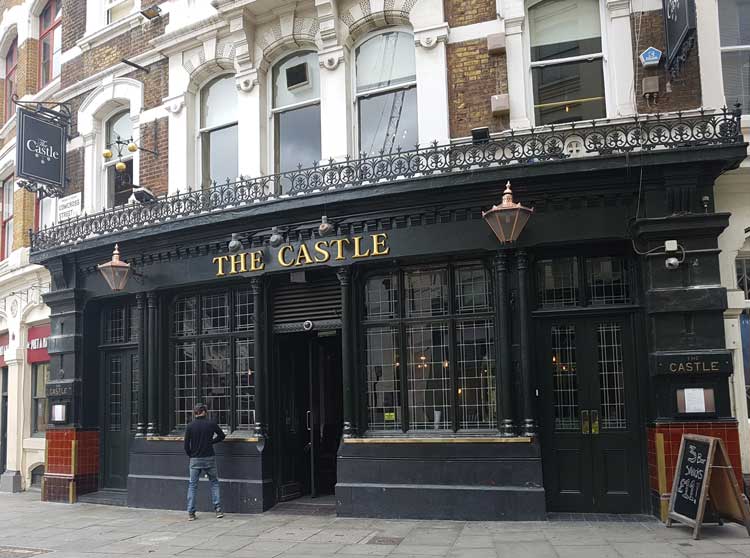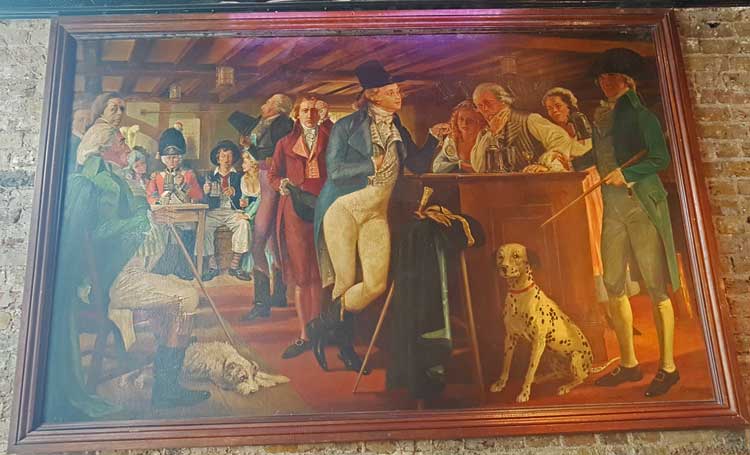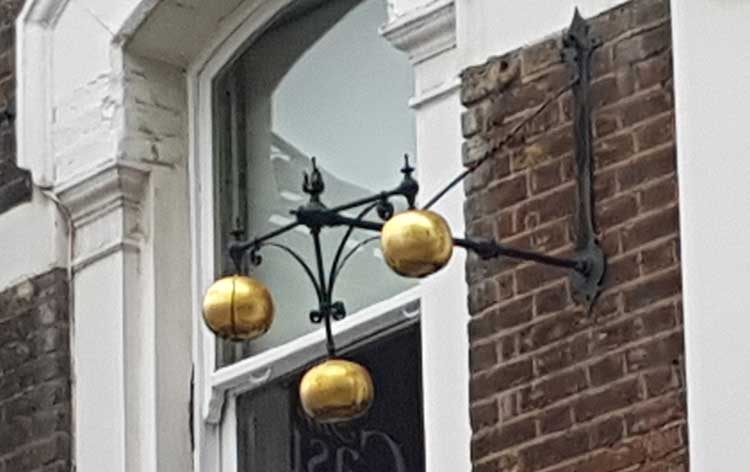
The Castle, at the junction of Cowcross Street and Turnmill Street has a unique claim to fame.
I wonder if you can spot what it is just by looking at the above photograph?
No? Well, let me tell you a story.
To the north-west of Turnmill Street in the late 17th, whole of the 18th and early 19th centuries, there used to stand an infamous entertainment district of London that laboured under the curious moniker of Hockley-in-the-Hole.
The entertainments for which this little enclave were known were of a decidedly hedonistic type - drinking, debauching and gambling being the chief activities that visitors to Hockley-in-the-Hole came to enjoy.
From a gambling perspective, the area was renowned for its cock-fighting rings, and it was to one of these that a portly, well-dressed gentleman came one day in the early 19th century.
At first, his luck was in, and his winnings mounted.
But, as with many a gambler before and since, the man did not know when to quit - and it wasn't long before he had incurred massive losses.
The man made his way to the Castle Tavern, and asked the landlord to advance him a sum of money that would be sufficient to pay of his gambling debts.
Of course, since he was a stranger, the landlord couldn't be expected to undertake such a transaction without adequate security; and this the gentleman offered in the form of his handsome pocket watch.
Now, technically, what the landlord was being asked to do was operate as a pawnbroker without having the necessary licence to do so.
But, the man certainly seemed wealthy enough to honour the debt, and, if he didn't, well the pocket watch was worth much more than the amount he was being asked to hand over.
So, without giving it too much thought, the landlord accepted the watch, the money was handed over, and, proffering enormous thanks, the man left the castle and headed back to Hockley-in-the-Hole to settle his debts.

A few days later, the landlord was much surprised when a royal messenger turned up at the pub and proceeded to redeem the watch with a handsome sum of money.
He also presented the landlord a Royal Warrant that allowed him from that day forth to advance money on pledges.
The well-dressed, portly stranger, it transpired, had been none other than King George IV.
From that day on, The Castle has had the distinction of being the only pub in England that, as well as its pub sign, is also able to display the three balls of a pawnbroker on its exterior wall.

Whether the story is true, or not, is another matter altogether.
It is a delightful tradition, and, according to a plaque inside the pub:- "from that time a pawnbrokers licence has been issued to the Castle annually" - but its an old plaque and credit will, most certainly, be turned down today, no matter how expensive your watch!
But, on the wall inside the pub, visitors can admire a huge painting that shows George IV dangling his watch enticingly in front of the landlord, who strokes his chin as he mulls over whether he can trust this stranger who has turned up out of the blue and asked him to lend him a sum of money.
And that is this pub's unique claim to fame - it is the only hostelry in London that displays the three balls of the pawnbroker on its exterior wall.
Did you spot it?